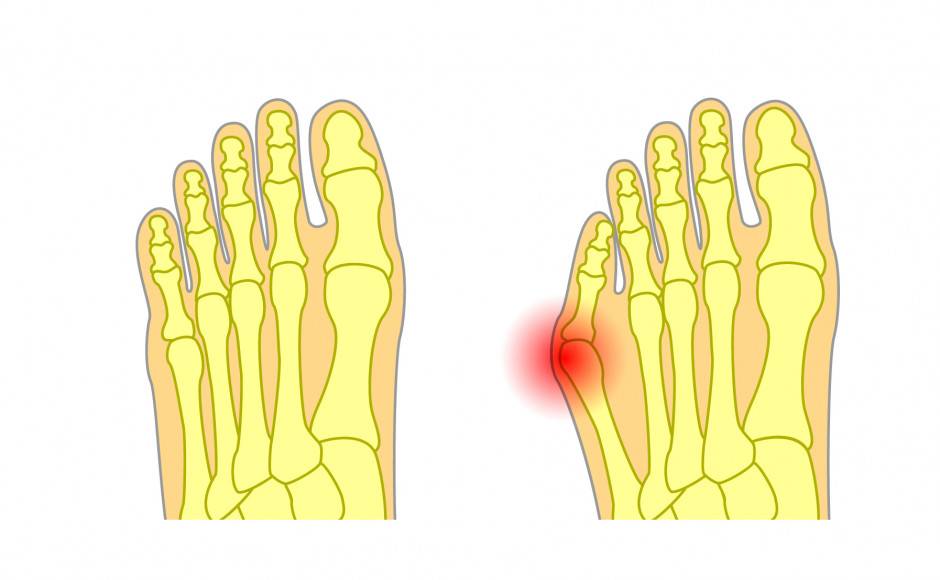Advanced Tailor’s Bunion (Bunionette) Surgery
A Tailor’s bunion, also knows as a “bunionette” or “mini-bunion” refers to the bony bump that forms on the metatarsal joint of the fifth toe. Tailor’s bunions are often associated with pain and swelling of the area, formation of painful calluses or corns, difficulty wearing closed-toe shoes and high heels.

Tailor’s bunions can be caused by a variety of reasons. Some people are born with a crooked fifth metatarsal bone or an abnormally large fifth metatarsal at the head of the bone. Tailor’s bunions can also result from the forefoot being compressed from wearing tight or narrow shoes over time, or overloading of the outside of the foot with gait. Systemic diseases such as rheumatoid arthritis or inflammatory arthropathy can lead to their development as well.
Surgery for Tailor’s bunions range from shaving off the bump to making certain cuts into the bone and fixating it into a corrective position with screws/pins.

More About Advanced Tailor’s Bunion (Bunionette) Surgery
Dr. Matthew Turanovic is trained in the most up to date and advanced surgical techniques and protocols for foot and ankle surgery - without the need for casts and crutches. See the about me for more information about your surgeon.
A thorough consultation, history, examination, and understanding of patient goals are required to determine which surgical procedure(s) will correct the tailor bunion as a whole. As such, information about the recovery period and return to activities and work will be discussed at time of consultation.
The surgery typically takes about 30 minutes to 1 hour. Surgery is done with regional anesthesia and optional oral sedation. This means the nerves of the foot are numbed with local anesthetic so no pain is felt during the procedure. Oral medication is given to reduce anxiety, promote a calming effect, and sometimes a relaxing nap. This allows for a quicker, more comfortable recovery after surgery and poses significantly fewer risks and complications compared with general anesthesia.
Detailed care instructions will be given and pain control medicine will be prescribed after surgery. You will have direct contact with the surgical team should questions or concerns arise when you leave the office.
